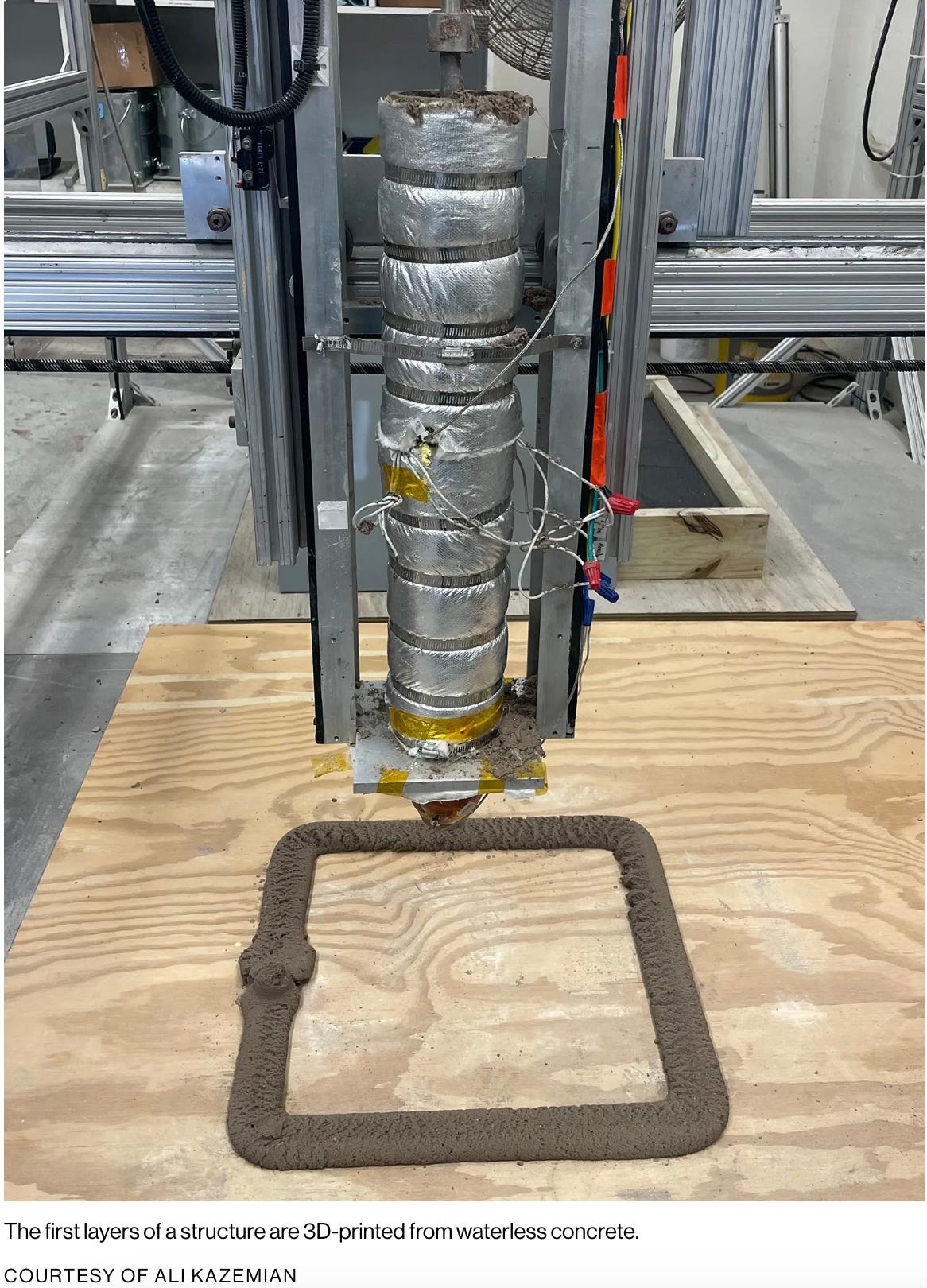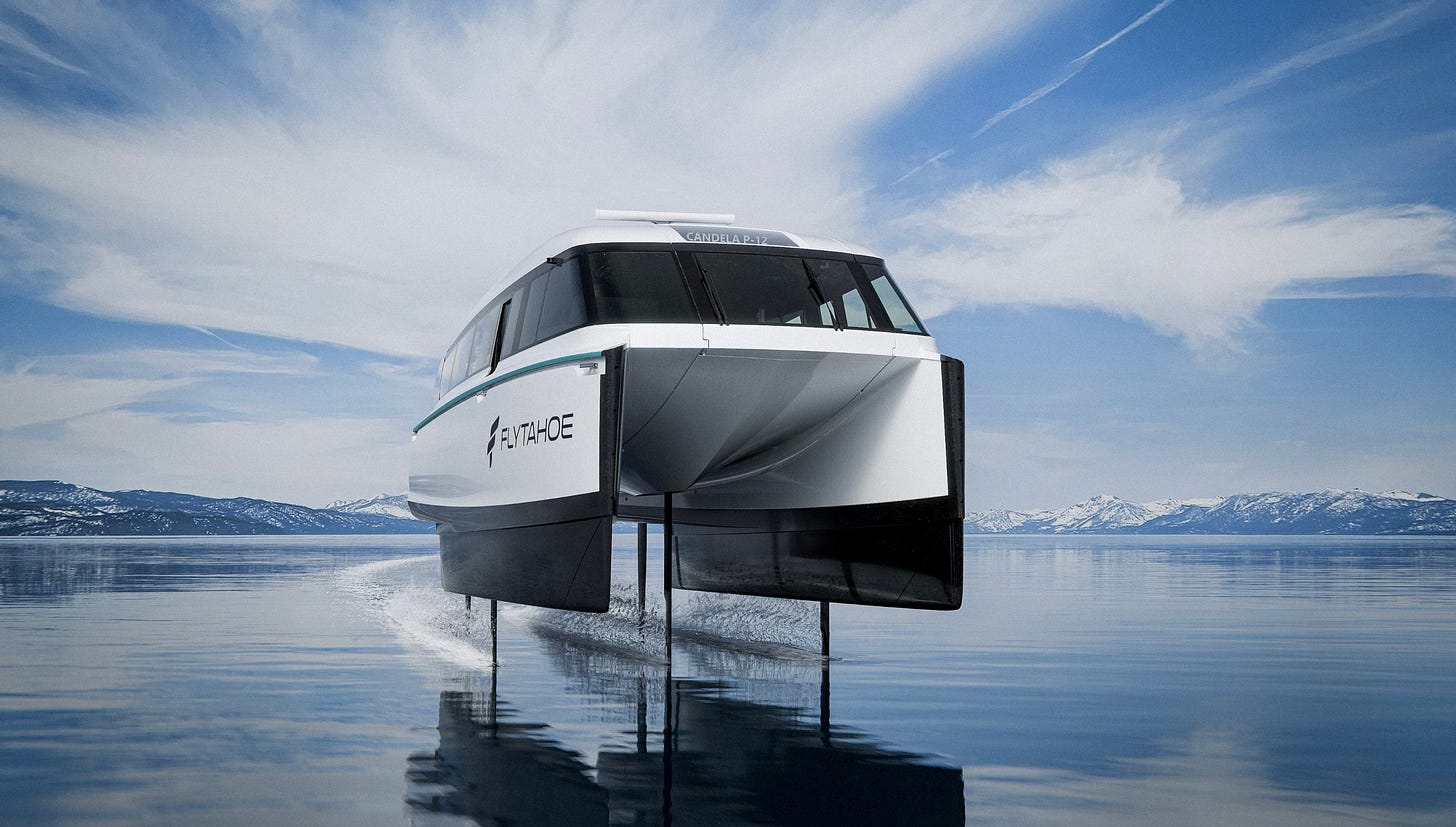This week we investigate a new method of injecting drugs that was inspired by the way that a squid moves through water. We examine a new waterless concrete that may allow us to build houses on the Moon and Mars. We discover a flying electric ferry and we ask the question “is receiving a fright healthy for you?”
Squid Inspired Injection Mechanism
A team from MIT have developed a new needle free micro jet system for delivering drugs directly into the gastrointestinal tract. The team was inspired by the jet propulsion system of squid and octopi.
Currently we use needles for injecting a range of drugs. This requires trained staff and the correct disposal of used needles. Oral delivery mechanisms struggle to effectively deliver large molecules due to the vulnerability to digestive breakdown.
Squid and Octopi can propel themselves by filling their mantle cavity with water and then rapidly expelling that water through their siphon. Changing the force of the water and pointing the siphon in different directions allows the animal to control the speed and direction of their travel.
The team use two methods to mimic this action. They used compressed carbon dioxide or tightly coiled springs to generate the force to propel liquid drugs out of the capsule. The gas or spring is kept compressed by a carbonated trigger which is designed to dissolve when exposed to a humid or acidic environment such as in the stomach. When the trigger dissolves the gas or trigger expands propelling a jet of drugs out of the capsule into the body.
The team was able to design the capsule to target different areas of the digestive tract. One sits in the stomach and injects drugs directly downward into the tissue. The other aligns itself with the small intestine or esophagus. This type injects into a side wall. The capsules are made of metal and plastic and naturally pass.
The system will suit drugs that need to be delivered frequently such as insulin. It will also make it easier to administer drugs to patients that don’t like needles (i.e. men). The next step is to further develop the capsules before human trials begin.
Waterless Concrete
One problem with building a settlement on Mars or the Moon is the expense of transporting the building materials to the site. A settlement or base would require launch pads, shelters and radiation blockers at a minimum. Transporting each kilogram of material to the moon costs about US$1.2 million. If we could source any of the building materials on site it would save enormous amounts of time and expense.
One of the most flexible building materials is concrete however traditional concrete uses large amounts of water which is not available on the moon. A team at Louisiana State University have developed a type of concrete that does not need water and can also use lunar soil as an ingredient. The new cement is based upon sulfur. The sulfur is heated until it is molten. It is then able to bind the material without the need for water.
Recent trials used this sulfur based cement mixed with simulated lunar and martian soils to 3D print walls and beams for potential habitats. The construction can easily be automated (which is vital on the Moon and Mars). The cement can handle a wider range of temperature extremes and cures faster than traditional concrete. It may also be possible to extract the required sulfur from the Lunar and Martian soils further reducing the transport cost.
The waterless concrete may also be useful on Earth. Places like the Middle East have a lack of water but an abundance of sulfur (a by product of oil production). The product may also be useful in disaster areas with broken supply chains and where there is a need for the rapid construction of storage buildings. No doubt there will be military applications where the rapid curing will allow construction of a variety of types of defenses and buildings quickly.
Flying Electric Ferries
Candela, a Swedish startup has just closed its third round of funding which will allow it to expand to the US where FlyTahoe, a Nevada based ferry company has just purchased their P-12 fully electric ferry to shuttle tourists and locals across Lake Tahoe.
The P-12 will cover the North South route at 50 kilometers per hour cutting the travel time in half (compared to a car journey). The company claims that the ferry is 10 times more efficient than the traditional ferries they currently use, it is also quieter, smoother and leaves no wake.
Candela builds several different interiors. The ferry can be used as a shuttle, voyager or as a business vessel. The vessel is 12 meters long and 4.5 meters wide. In shuttle mode it can carry 30 passengers seated with 1 crew. The range is 75 kilometers at top speed. The vessel can handle 1 meter seas when foiling and 2 meter seas when not. Charging from 10% battery to 85% takes approximately 45 mins.
Stockholm launched its first Candela electric ferry in November 2024. The electric ferry is used on a 15 kilometer route cutting the 55 minute commute time in half. Candela estimates that 120 of its vessels could replace the 35 diesel vessels currently used in Stockholm. The ride would be quicker, smoother and cheaper to run. The significant up front cost will reduce with economies of scale once manufacturing grows.
It is healthy to be Frightened?
Aarhus University in Denmark have conducted research that suggests that recreational fear experiences, e.g. a haunted house, may reduce inflammation in individuals with low grade inflammation.
Our fear and acute stress responses are fundamental survival mechanisms. They activate the adrenergic system which prompts a fight or flight response. Chronic stress is associated with unhealthy low grade inflammation. Brief activation of the adrenergic system positively impacts the immune system.
The team recruited adult visitors to a high intensity haunted house attraction (in Vejle Denmark). Heart rates were monitored throughout the 51 minute event. Self reported fear levels were recorded using a Likert scale.
Blood samples were collected just before, immediately after and three days later. The high-sensitive C-reactive protein was measured and immune cell counts were completed. Twenty two participants exhibited low grade inflammation prior to the event. 82% of those participants showed a decrease in inflammation levels 3 days after the event.
Animal studies show that acute stress can mobilize inflammatory cells and prepare the immune system for potential trauma or infection. The haunted house may provide some health benefits in addition to the thrills of scaring the life out of yourself. Something to take into account the next time you are hesitant about going on that rollercoaster or into that haunted house.
Paying it Forward
If you have a start-up or know of a start-up that has a product ready for market please let me know. I would be happy to have a look and feature the startup in this newsletter. Also if any startups need introductions please get in touch and I will help where I can.
If you have any questions or comments please comment below.
I would also appreciate it if you could forward this newsletter to anyone that you think might be interested.
Till next week.





